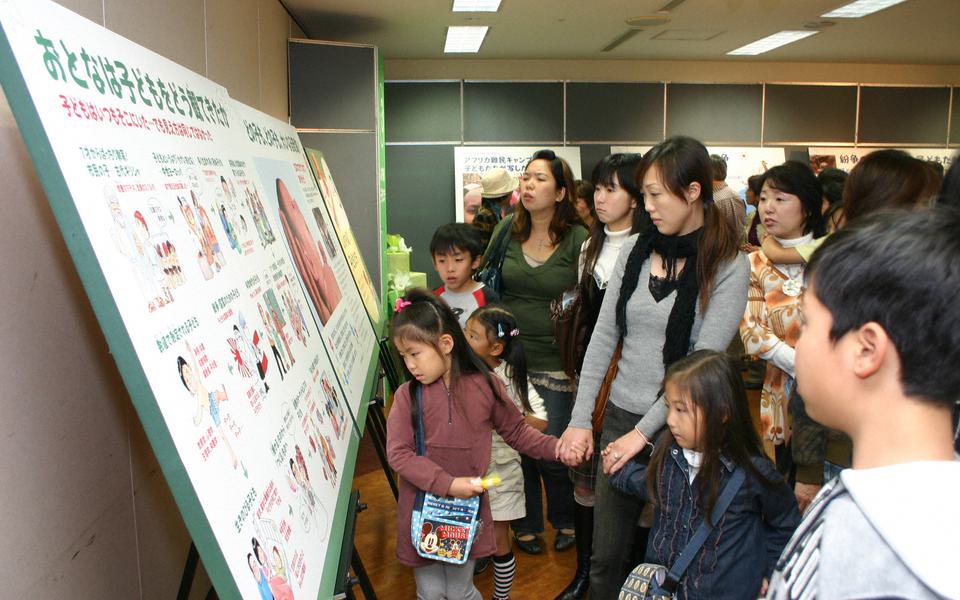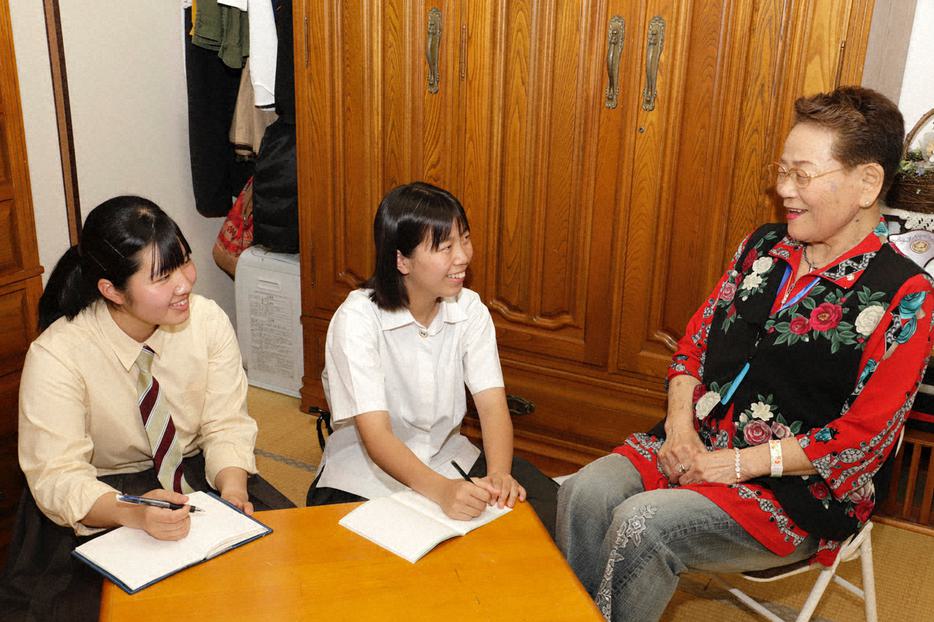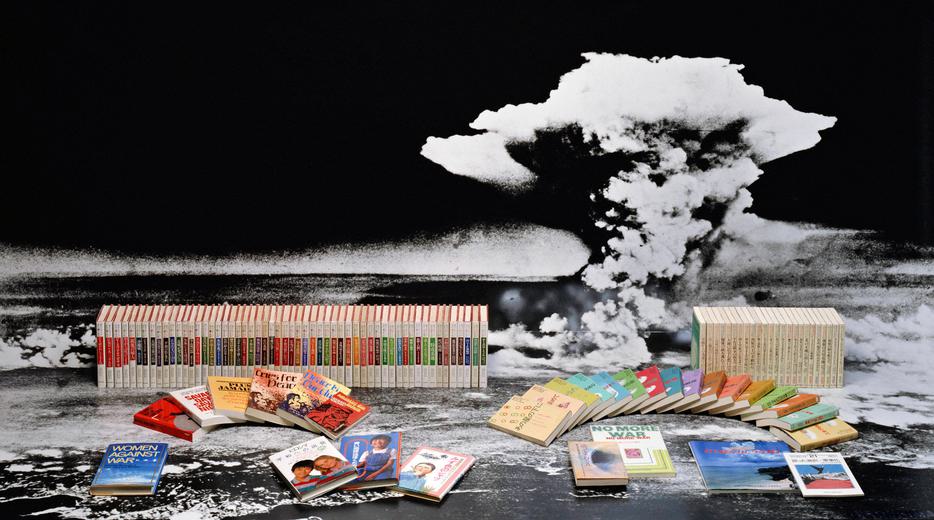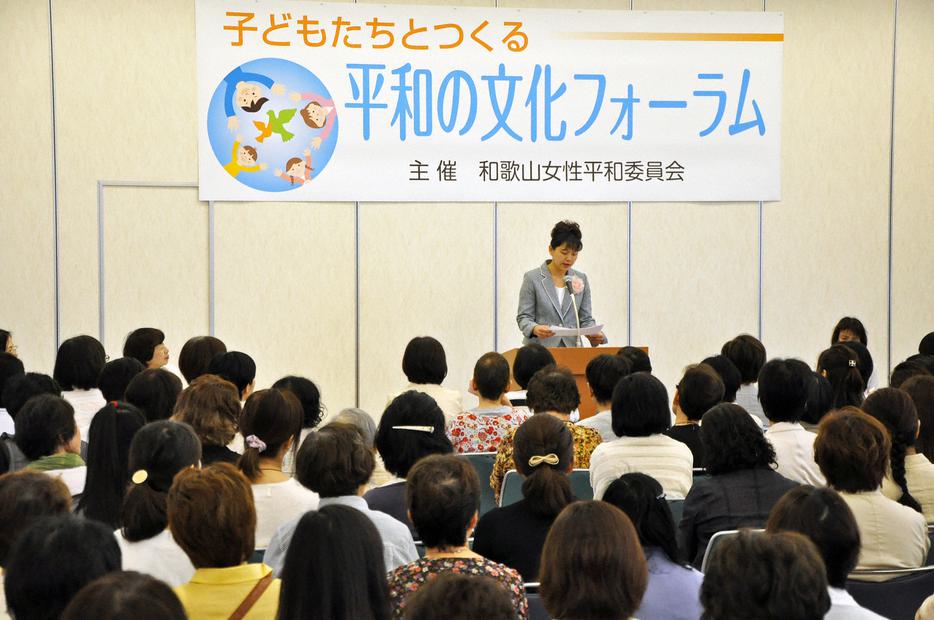
13th April 2022
Activities of the Soka Gakkai Women's Peace Committee
Founded in 1980, the WPC has been engaged in promoting education, raising awareness, and expanding support for peacebuilding in civil society in Japan through exhibitions, lectures and publications based on the Buddhist principles of respect for the dignity of life and equality. It has worked to help strengthen the foundations of peace at the grassroots through these activities developed and initiated by women.
The Soka Gakkai Women’s Peace Committee (WPC) is a group within the women’s division of the Soka Gakkai Buddhist organization in Japan. As of March 2022, there are 1,100 committee members across the country.
Founded in 1980, the WPC has been engaged in promoting education, raising awareness, and expanding support for peacebuilding in civil society in Japan through exhibitions, lectures and publications based on the Buddhist principles of respect for the dignity of life and equality. It has worked to help strengthen the foundations of peace at the grassroots through these activities developed and initiated by women.
When the UN began to advocate the culture of peace in the early 2000s, the WPC identified closely with its ideals and made it a pillar of its activities. Efforts to realize these ideals were carried out, such as promoting respect for life and diversity, practicing nonviolence through education, dialogue and cooperation, promoting environmental protection, and encouraging values, attitudes and behavior based on gender equality and human rights.

A woman being interviewed as part of the war and atomic bombing testimonial project
Collecting war and atomic bombing testimonials
The Women’s Peace Committee’s first project after its inception was collecting and publishing war and atomic bombing testimonials from women. The twenty volumes of With Hopes for Peace were compiled over the course of a decade from 1981-91. Women described the painful experiences that they had previously tried to forget with the desire to pass them down to the next generation, in particular as citizens of Japan, the only country in the world to have suffered a nuclear attack, to ensure such tragedy never be repeated.
Conventional war history is based primarily on political and diplomatic documents. The testimonials collected by the WPC received positive feedback since civilian experiences, particularly from the perspectives of women, are rare.
In the summer of 2005, the 60th anniversary of the end of the Second World War, members of the WPC visited atomic bomb survivors with a video camera and the concern that these direct witnesses were reaching an advanced age. The resulting recorded testimonials in Japanese were compiled into a DVD.
In 2009, the WPC translated these testimonials by hibakusha from Hiroshima and Nagasaki into English, Spanish, Chinese and French, and a multi-language DVD entitled “Testimonies of Hiroshima and Nagasaki: Women Speak Out for Peace” was produced in collaboration with the International Campaign to Abolish Nuclear Weapons (ICAN). Through these efforts to make the brutal reality of the atomic bombings known widely in the international community, the WPC worked to help create the global momentum that ultimately led to the adoption of the Treaty on the Prohibition of Nuclear Weapons (TPNW) at the UN in 2017.

Publications in Japanese and English by the Committee
Protecting the Rights of the Child
In response to the adoption at the UN of the Convention on the Rights of the Child (CRC) in 1989, the WPC launched activities to encourage Japan’s ratification. In 1991, the exhibition “What are the Rights of the Child?” produced by the WPC was shown around the country to help galvanize public opinion. After Japan ratified the Convention in 1994, the WPC continued awareness-raising efforts through a nationwide tour from 2006 through 2015 of the exhibition “The Culture of Peace and Children” and organizing forums and lectures on the rights of the child to ensure the spirit of the CRC be actualized.
The WPC has also participated in NGO reporting on Japan’s implementation of the CRC, submitting reports on Japan’s progress from the standpoint of civil society in terms of action to make the CRC widely known and the provision of human rights education.
The WPC launched its Children’s Smile Campaign in 2019, on the 30th anniversary of the adoption of the CRC, aiming to help both adults and children learn about and correctly understand its spirit through online quizzes and surveys. The WPC is committed to engaging in raising awareness at the grassroots in the belief that a world where children can live happily is a world where all people can experience happiness.
Women’s Empowerment
Tsunesaburo Makiguchi (1871-1944), the founding president of Soka Gakkai (founded in 1930), was an educator and pioneer in promoting girls’ education. Second president Josei Toda (1900-58) laid the foundation for women to freely take leadership and initiate activities in the Soka Gakkai against the backdrop of postwar male-dominated Japanese society. Third president and SGI President Daisaku Ikeda has also promoted the empowerment of women, calling the 21st century, “The Century of Women.”
On March 8, 2000, International Women’s Day, the role of women in peace and security was emphasized in a UN Security Council Press Statement, and Security Council Resolution 1325 was adopted the same year. Responding to this landmark achievement, the WPC has been working for the empowerment of women together with millions of fellow women members of Soka Gakkai.
When the UN International Decade for a Culture of Peace and Non-Violence for the Children of the World (2001-10) began, the WPC produced the exhibition “Women and the Culture of Peace.” Supervised by peace scholar Dr. Elise Boulding, the exhibition introduced the role and mission of women in peacebuilding with numerous photographs and illustrations. It was viewed by some 1.2 million people around Japan from 2002 through 2015.
Starting in 2003, the WPC has organized Culture of Peace Forums throughout Japan where Soka Gakkai women shared their efforts to build the culture of peace in their immediate environment and communities.

At a Culture of Peace Forum
Organizing SDG Forums
Recently, the WPC began a series of new projects on the Sustainable Development Goals (SDGs), including study groups, lectures, screening events and meetings where individual women share their grassroots contributions. Soka Gakkai members’ actions in the spirit of cherishing every individual and contributing to global society in their daily lives based on the philosophy and practice of Buddhism also correspond to the central promise of the SDGs of leaving no one behind.
Toward a sound future for our planet and humankind, the Women’s Peace Committee works to inspire in people a sense of responsibility and commitment to action to ensure the achievement of the SDGs.